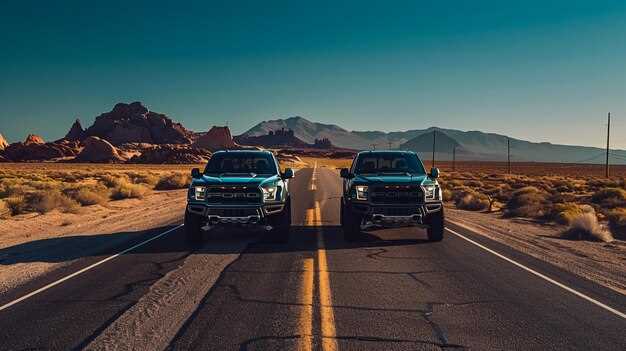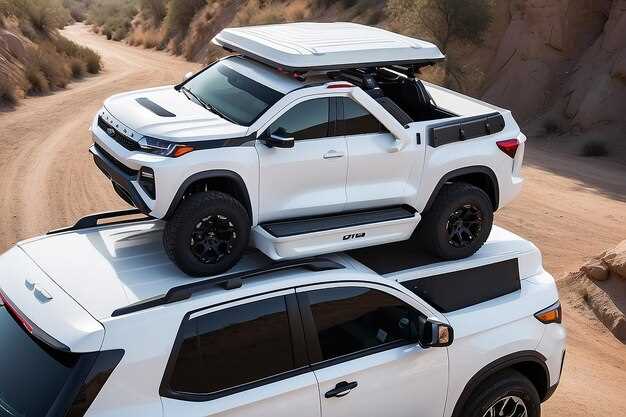
When it comes to choosing a truck, the decision often boils down to fundamental differences between models, especially when comparing the Toyota Tacoma and the Toyota Tundra. Both trucks are designed with reliability and performance in mind, but they cater to different needs and preferences. Understanding the key attributes of each can help you make an informed choice for your specific requirements.
The Tacoma is known for its versatility and off-road capabilities, making it an excellent choice for adventurers and outdoor enthusiasts. With a compact design and lighter weight, it excels in maneuverability and can tackle rugged terrains that larger trucks might find challenging. Its practicality shines through in everyday driving scenarios as well, particularly in urban settings where parking and handling smaller spaces are critical.
On the other hand, the Tundra offers a more spacious and powerful experience, ideal for those who need a heavy-duty truck for towing and hauling. With a robust engine and a larger cabin, the Tundra caters to individuals who prioritize strength and space. Whether you’re hauling equipment for work or accommodating a family on long trips, the Tundra simplifies these tasks with its generous payload capacity and comfortable seating.
This article delves into the features, pros, and cons of both the Tacoma and Tundra, helping you decide which truck best suits your lifestyle and driving needs. Understanding what each option brings to the table will guide you in making a decision that aligns with your personal and professional pursuits.
Toyota Tacoma versus Tundra: Which Truck Suits You?
When considering a pickup truck, the choice between the Toyota Tacoma and Tundra is significant for potential buyers. Each model caters to different needs and preferences, making it crucial to identify which one aligns more closely with your requirements.
The Toyota Tacoma is known for its versatility and off-road capabilities. It’s particularly suited for individuals who enjoy outdoor adventures or require a vehicle that can navigate rough terrains. With a more compact size, the Tacoma is easier to maneuver in urban settings while still offering impressive towing capacity and cargo space for weekend gear.
On the other hand, the Toyota Tundra is tailored for power and performance. This full-size truck is designed for heavy-duty tasks, making it ideal for those who need to haul larger loads or require a vehicle for work purposes. With a spacious interior and advanced technology features, the Tundra provides a comfortable driving experience for long distances or daily commutes.
Fuel efficiency is another consideration. The Tacoma generally offers better fuel economy compared to the Tundra, which is an important factor for buyers focused on reducing their fuel costs. However, the Tundra compensates with its robust engine options, suitable for those needing maximum power and towing capabilities.
Ultimately, the decision between the Toyota Tacoma and Tundra hinges on specific lifestyle needs. If you value off-road capabilities, compact design, and fuel efficiency, the Tacoma may be the better choice. Conversely, if you require a larger vehicle for heavy-duty work and enjoy a spacious interior, the Tundra could be more suitable for your needs.
Comparing Payload and Towing Capacities of Tacoma and Tundra
When it comes to choosing between the Toyota Tacoma and Tundra, understanding their payload and towing capacities is crucial for making an informed decision. Both trucks offer impressive capabilities, but they cater to different needs.
The Toyota Tacoma is designed primarily for mid-size truck enthusiasts who require versatility without compromising performance. Its payload capacity ranges from approximately 1,120 to 1,620 pounds, depending on the specific trim and configuration. This makes Tacoma suitable for carrying heavy loads such as camping gear, tools, or work equipment.
- Payload Capacity: 1,120 – 1,620 lbs
- Towing Capacity: 3,500 – 6,800 lbs
On the other hand, the Toyota Tundra caters to drivers who seek a full-size truck experience. Its superior towing and payload capacities make it an excellent choice for those who need to transport larger loads. The Tundra can handle a payload of approximately 1,440 to 2,240 pounds, while its towing capacity ranges from about 8,300 to 12,000 pounds, depending on the configuration.
- Payload Capacity: 1,440 – 2,240 lbs
- Towing Capacity: 8,300 – 12,000 lbs
When comparing the two:
- The Tacoma is ideal for those who prioritize maneuverability and require moderate towing capabilities.
- The Tundra is better suited for drivers who need higher towing and payload capacity for larger trailers, boats, or heavy equipment.
Ultimately, your choice between the Tacoma and Tundra will depend on your specific needs, whether you value the Tacoma’s compact versatility or Tundra’s robust towing power.
Off-Road Capabilities: Tacoma vs. Tundra in Tough Terrain

When it comes to off-road capabilities, both the Toyota Tacoma and Tundra have their strengths, but they cater to different types of adventurers. The Tacoma, a midsize truck, is designed with rugged terrain in mind, offering impressive maneuverability and lightweight versatility. Its available off-road packages, such as the TRD Off-Road and TRD Pro, equip the Tacoma with features like upgraded suspension, skid plates, and multiple terrain modes that enhance its ability to tackle rocky trails, steep inclines, and muddy paths.
In contrast, the Toyota Tundra, a full-size truck, boasts a more robust frame and powerful engine options, making it capable of handling tougher conditions and heavier loads. With its available four-wheel drive and advanced traction control systems, the Tundra can conquer challenging terrains with confidence. Its larger size offers increased ground clearance, which is beneficial in navigating through deep snow or over large obstacles. However, this size can also result in less agility compared to the Tacoma.
For those looking to engage in serious off-road adventures, the Tacoma may be the better choice due to its lighter weight, smaller dimensions, and specific off-road enhancements. Conversely, if towing heavy equipment or carrying larger payloads on rugged trails is a priority, the Tundra stands out with its superior power and sturdiness. Ultimately, the choice between Tacoma and Tundra will depend on the intended use and personal preferences regarding off-road experiences.
Fuel Economy and Maintenance Costs of Tacoma and Tundra

When comparing the Toyota Tacoma and Tundra, fuel economy is a significant factor for potential buyers. The Toyota Tacoma typically offers better fuel efficiency, especially in its V6 configuration, with an EPA rating of approximately 18-22 miles per gallon in the city and 22-26 mpg on the highway. This makes Tacoma a more economical choice for daily driving and long-distance travel, particularly for those who may use their truck primarily for commuting or light hauling.
On the other hand, the Toyota Tundra, being a full-sized truck, prioritizes power and capability over fuel efficiency. With a larger V8 engine, the Tundra achieves around 13-18 mpg in city conditions and 17-23 mpg on the highway. This means that while Tundra excels in towing capacity and load-bearing capability, it may incur higher fuel expenses over time, especially for buyers who drive frequently or cover large distances.
Maintenance costs also differ between the two models. The Tacoma generally has lower maintenance costs due to its smaller engine and simplicity. Routine services like oil changes, brake repairs, and tire rotations are often less expensive for Tacoma owners. Many Tacoma owners report fewer issues overall, contributing to lower long-term costs.
Conversely, the Tundra, with its larger engine and more complex systems, may encounter higher maintenance costs. Parts and repairs can be pricier, and owners may need more frequent service intervals as the vehicle ages, particularly if used for heavy towing or off-roading. However, both trucks benefit from Toyota’s reputation for reliability and ease of service, meaning that they both maintain their value well over time.
In conclusion, if fuel economy is a priority, the Tacoma is likely the better choice. However, for those who require a heavy-duty truck with more power and capacity, the Tundra is the appropriate option, albeit with the understanding that fuel and maintenance costs will be higher.
